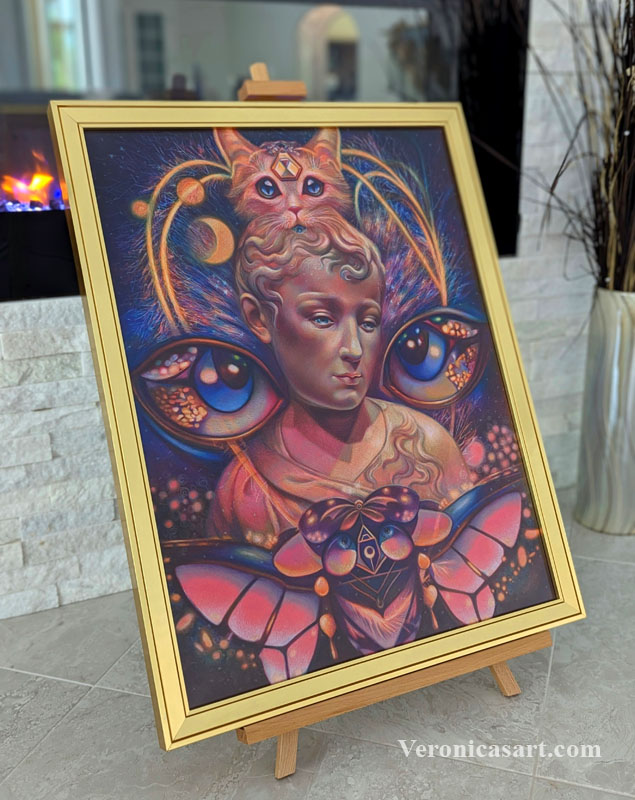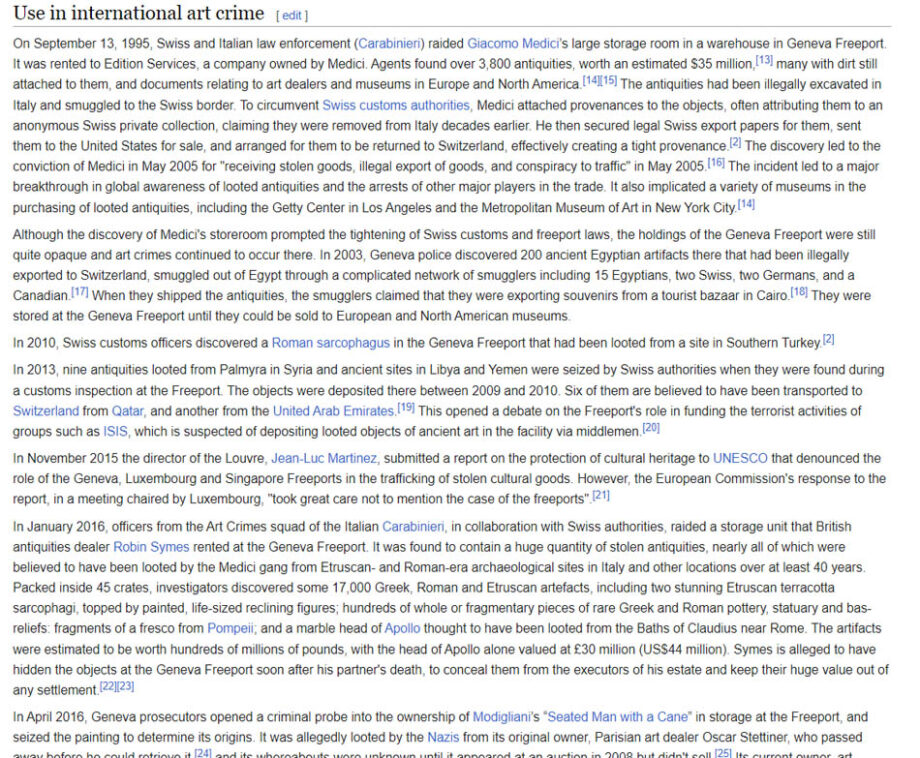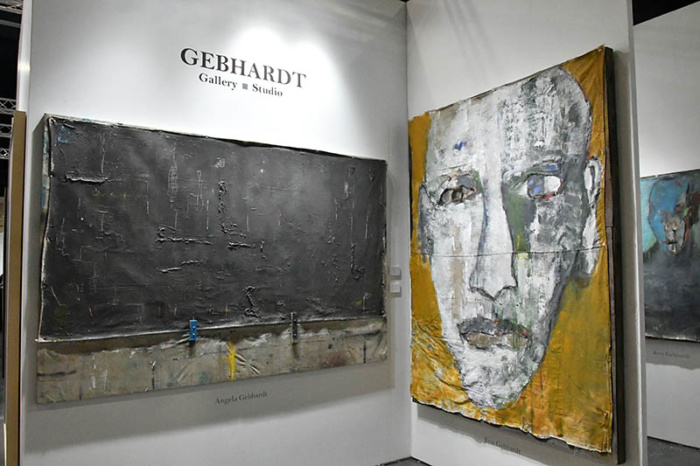
The uncomfortable truth about the art market corruption
Is this painting great? No. Discover why we face the fraud of contemporary art every day.
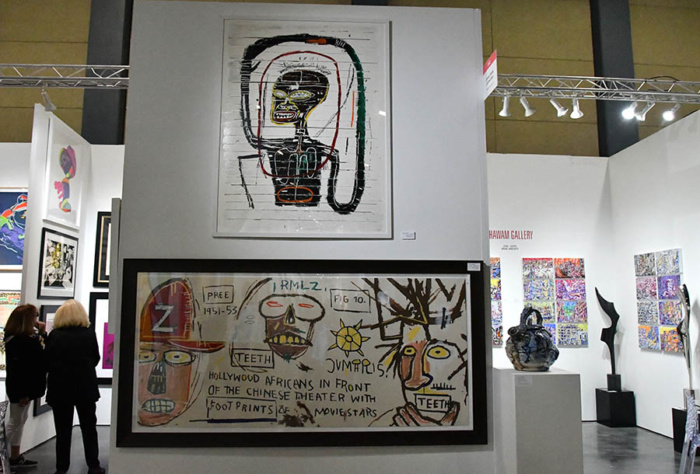
This is an opinion piece that you may not agree with. I’m going to explain some art market money laundering and Ponzi schemes prevalent at the top art market today. I’m a realist artist myself and I see how the majority of talented artists can barely make a living, while others are killing it in the contemporary art market. The obvious question is why some artists are incredibly successful while the majority struggle. This question is not about feeling jealous or insecure, rather it’s about observing and understanding the driving force behind successful artists so you can make informed decisions whether you’re an artist or art collector.
The first answer to this question is relationships. Artists who grow their network and connect to the most influential art dealers, gallerists and curators in New York, LA, London and other top art destinations can become famous early in their career. Artists who get exhibited in art museums in New York stand a much better chance of growing their artistic career exponentially according to Magnus Resch, the author of “How to become a successful artist” book.
The second answer to this question- why some strange artists become famous- is art market collusion. In essence, art investors pose as art collectors. This category of art collectors want to make money by buying modern and contemporary art at the art fairs and top art galleries, hoping to flip the art in a few years making a considerable profit. This leads to some remarkable art market corruption schemes at the very top tier of the art market you can learn about in podcasts, art law books and some YouTube videos. (I’m going to mention some of them below.)
There is no art market regulation. Therefore it attracts many speculators to it. In this post, I’m going to discuss several most used art market corruption schemes, however there are many more I’m sure.
First, let’s look at the numbers because art seems to be a profitable business overall.
How big is the art market?
Despite billions made in revenue, the art market is a relatively small market if you look at the numbers in comparison to revenues of some blue chip companies. For instance, FedEx annual revenue for 2022 was $93.512B. Walmart generated over $572 billion in revenue in 2022. In its 2022 financial year, Apple reported 394.33 billion U.S. dollars in revenues. The global art market for 2022 was $67.8B.
- The global art market: the art market worldwide totaled $67.8 billion in 2022, growing by 3% year-over-year and reaching its second-highest level to date, according to The Art Market 2023, authored by Dr. Clare McAndrew, Founder of Arts Economics and published by Art Basel in partnership with UBS. The US was the top market, commanding 45% of global sales by value in 2022 and growing by 8% year-on-year to reach $30.2 billion! Significant growth at the high-end of the auction market, along with some growth in dealer sales, propelled the increase.
- Other art markets: The UK and China ranked second and third among global markets respectively.
- Dealer sales: art dealer sales went up 7%, reaching the pre-pandemic level of $37.2 billion. Nearly two-thirds (61%) reported an increase in sales year-on-year, and a majority (58%) even saw an improvement in values over 2019. About a quarter (24%) reported a year-on-year decline in values. The return of art fairs resulted in dealers making a growing percentage of their sales at in-person events in 2022.
- Online-only sales: Online fell to $11 billion, dropping 17% from their 2021 peak of $13.3 billion, though still 85% higher than in 2019. Online sales represented 16% of the art market’s 2022 sales volume overall.
- Auction Houses: The strength at the top end of the art market – Christie’s, Sotheby’s, and Phillips each achieved a record high in 2022, with combined annual revenues of $17.7 billion.
- Source: https://www.artbasel.com/stories/key-findings-art-market-report-2023
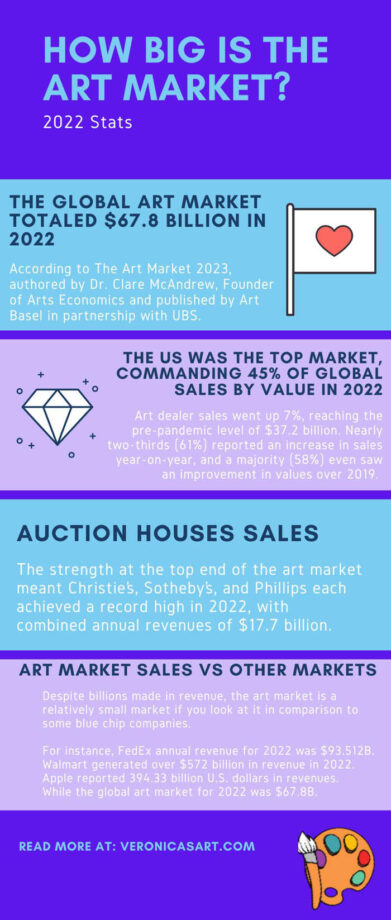
Top 5 art galleries in the world:
- Larry Gagosian of Gagosian Gallery, 17 galleries worldwide! $1B in revenue
- David Zwirner of David Zwirner Gallery, 6 locations, $1B in revenue
- Manuela Hauser and Iwan Wirth of Hauser & Wirth, 10 galleries, slightly under $1B in revenue
- Marc Glimcher of Pace Gallery, 6 locations, $1B in revenue
- Jeffrey Deitch of Deitch Project, 2 locations, considerably under $1B in revenue
Data Source: Magnus Resch
Art market fraud at the top tier of the art world
Money corrupts people. That’s human nature. The top tier of the art market is all about making money, not selling or purchasing beautiful art. Because of deregulation and tax laws in the US, art has become a place to write off taxes or to store millions in overpriced works. Art dealers, curators, advisors and top mysterious clients all participate in these art flipping or art market tax evasion schemes to make money and to avoid paying taxes. Let me explain.
Ponzi scheme is a form of fraud in which belief in the success of a nonexistent enterprise is fostered by by the payment of quick returns to the first investors from money invested by later investors.
Art market fraud refers to deceptive and dishonest practices within the art industry that are intended to deceive, manipulate, or mislead buyers, sellers, collectors, investors, and other participants for financial gain. This type of fraud can encompass a wide range of illicit activities aimed at misrepresenting the authenticity, provenance, value, condition, or ownership of artworks.
#1 Charitable donations to art museums
Let’s look at the charity donations to art museums. These charitable contributions have several angles. In the first instance, while the artist gets zero in return from donating his art to a charity (only the cost of art supplies can be written off taxes as a business expense by the artist), the art collector can write off the entire price tag spent on art by donating it to an art museum or other non-profit organization. Yep, the artist gets nothing but the art collector is getting paid via a legit art donation.
In the second instance, charitable art donations can be good for artist’s brand name recognition. To advance artistic career, artists must receive validation by exhibiting their art at the top art museums in New York City. What does it mean exactly? Art must be chosen for shows by leading art curators working in New York. According to Magnus Resch, New York is the center of the art world and the “Holy Land” of art institutions and galleries. The Holy Land consists of Gagosian, Guggenheim Museum, MoMa, the Whitney Museum, Pace gallery and Houser & Wirth. A commercial gallery’s director representing work of such artists, would say that it’s a stamp of approval from professionals who choose the artist by merit. The more art museums the artist concurs, the more validation he receives, the much higher price of art follows. As a result, galleries sell very expensive art because of formal validation, not the aesthetic principles of art or the artistic genius. Art market ethics is questionable here.
This leads to art museum purchases or donations that raise the value of art. Nothing wrong with that, only many mega wealthy individuals sit on museums’ boards and pump the artist’s price up by giving the artist a show and then donating the art from their personal art collection to that museum at a much higher price. Donation is a tax write off. Nothing more and nothing less. Big money donations to the art museums are simple tax write offs. Plus you get your name written on a bench or a plaque. How exciting!
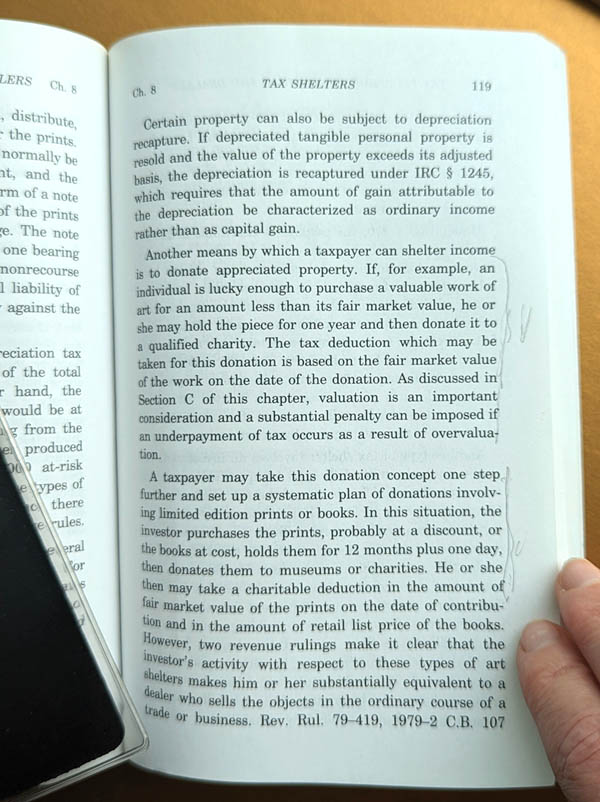
A taxpayer may take this donation concept one step further and set up a systematic plan of donations involving limited edition prints or books. In this situation, the investor purchases the prints, probably at a discount, or the books at cost, holds them for 12 months plus one day, then donates them to museums or charities. He or she then may take a charitable deduction in the amount of fair market value of the prints on the date of contribution and in the amount of retail list price of the books. However, two revenue rulings make it clear that the investor’s activity with respect to these types of art shelters makes him or her substantially equivalent to a dealer who sells the objects in the ordinary course of a trade or business. Rev. Rul. 79-419, 1979-2 C.B, 107. Source: Art Law in a nutshell by L. DuBoff, 4th edition.
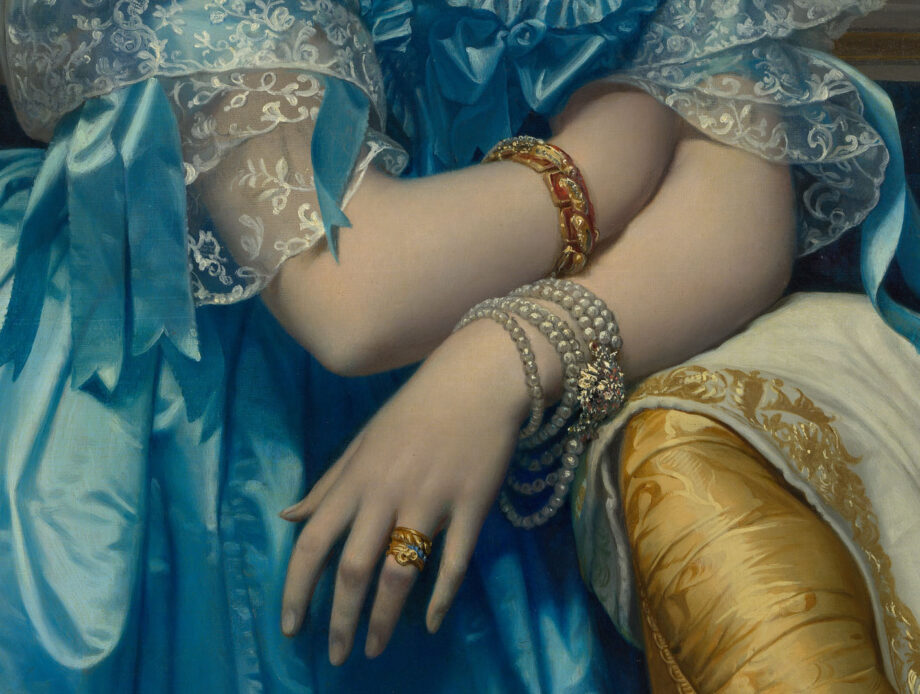
#2 How some obscure artists become famous.
Do you ever wonder how some strange art gets popular among the elite and good art remains in the shadows? Here is how you can become a famous artist participating in art market money laundering. Say, a wealthy person X must write off millions to avoid paying a big tax. So he must own an expensive painting, say a $15 million one without spending that much money on it. That wealthy person finds an underrepresented artist and buys some of his art for a few thousand dollars. But how do you make a $1k painting worth $10 million? Here is how. Such people are usually well connected and either already have or will find necessary people in the art world to realize their scheme. It means finding high end curators, appraisers and gallery owners who can decide on pricing of art. If the artist is underrepresented, they can’t justify price increase without a reason. Therefore they do something like this.
The unknown artist gets a massive marketing boost by hiring a PR firm to promote the artist’s work. These PR agencies place the artist in top publications, magazines and art influencer accounts using their connections. After a while, the artist gets a show at a high-end gallery where the right people shop for art at high prices. This process gives lots of credibility and social proof to the artist. As a result the unknown artist becomes “hot” as his artwork gets continuously promoted. The appraisers can put a high price on art from now on. At about that moment, the wealthy person X would cash in on his original investment because the art was purchased for pennies and sold for thousands. The investment is worth a million or two and can be donated to a setup charity. By spending some money on art and promotion, the artificially raised price becomes income after donation giving the investor profit not to spend it on taxes.
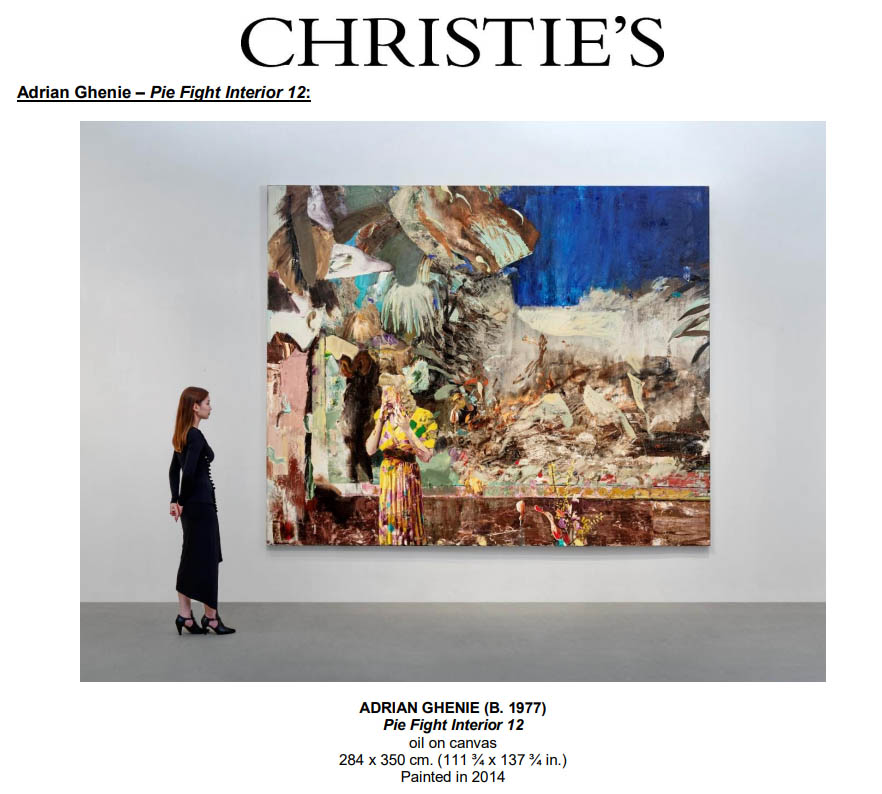
A variation of this business practice is when a ‘hot’ artist gets flipped a lot for higher prices in a pyramid-like scheme.
The most recent example of this Ponzi scheme is New York art advisor Lisa Schiff. She has got a lawsuit where two plaintiffs allege that she owes them $1.8 million related to the sale of a painting by famous Romanian artist Adrian Ghenie (b.1977). Ghenie is a hot artist represented by one of four top galleries-Pace. According to the Artnet news, the record for a Ghenie work sold at auction is $10.3 million for Pie Fight Interior 12 (2014), sold at Christie’s Hong Kong in May 2022. This lawsuit opened a can warms exposing Schiff’s business model of flipping art for profit for many years! In this particular case,
In 2021, Schiff told Barasch and Grossman that a Ghenie painting, Uncle 3 (2019), was available for purchase. After discussions they agreed to buy the painting. Barasch took a 50 percent share and Grossman and his spouse each acquired a 25 percent interest. No one got the art as it was shipped to a storage unit in Delaware. Source: https://news.artnet.com/art-world/art-advisor-lisa-schiff-hit-with-lawsuit-art-flipping-deal-2300709
Next year, the plaintiffs agreed to resale the art with the help of Lisa Schiff. They agreed on price of art – $2.5 million and to split the proceeds, after a commission to Schiff of $250,000. The art was sold at Sotheby’s Hong Kong and the sellers received $450,000. Schiff got the commission. The rest of the money, which was $1.8 million were never wired to the sellers by Schiff, hence the lawsuit.
What’s common among such schemers like Bernie Madoff* or Sam Bankman-Fried, founder of the collapsed cryptocurrency exchange FTX, is their low sense of consciousness and unbelievably lavish lifestyle. Schiff maintained her business model and lavish lifestyle for many years at the expense of those art collectors/investors who chased hot contemporary artists to get a lucrative return on their investment within a few years.
*Bernie Madoff, a prominent New York financier, pleaded guilty in 2009 to running a Ponzi scheme that resulted in as much as $20 billion in cash losses and $65 billion in paper losses. He was sentenced to 150 years in prison and died in April 2021 at age 82. Sam Bankman-Fried’s case is ongoing in 2023.
#3 Art purchase as a bribe and exchange for a valuable position
In this art market money laundering scheme, you usually see inflated art prices on art selling at a high-end art gallery where an “art collector” comes in and purchases art in exchange for a big favor or a valuable position within the government or other entity. The Hunter Biden case illustrates this concept perfectly. I’m not going to discuss the political views and implications here, rather I’d like to focus on the art corruption scheme itself.
In this particular case, the art gallery sold Hunter Biden’s art to some art collectors for 1.3 million dollars. According to the Insider, one art collector bought 11 artworks for $875,000 according to the Insider. Upon close investigation, the names of at least two people who were art collectors became known- Elizabeth Hirsh Naftali & Kevin Morris. Eight months later after the Hunter Biden’ solo show opening, Joe Biden-the president- put Naftali to the Commission for the Preservation of America’s Heritage Abroad.
This case illustrates how valuable positions can be sold when you can’t do a simple money transfer in exchange for it.
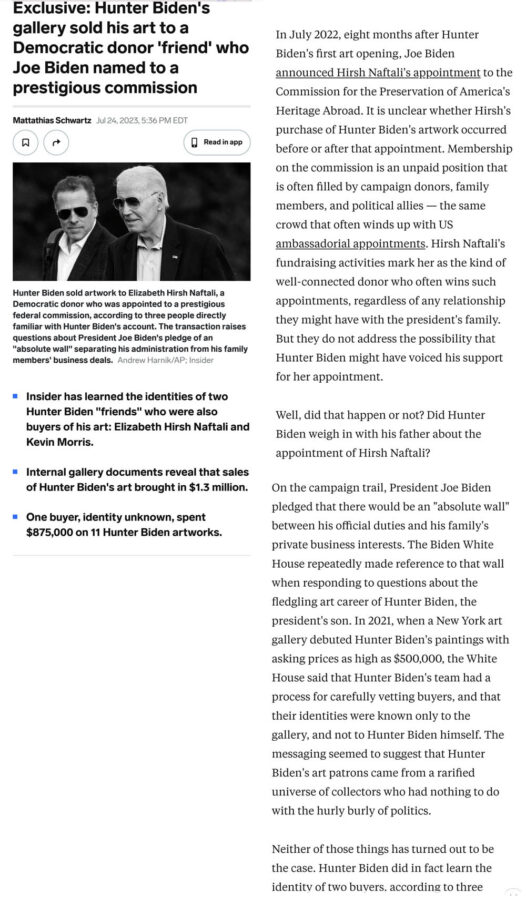
#4 Murky Pricing at high-end galleries
Pricing is murky. When you enter a top art gallery, you won’t see prices for art sold at the gallery. When you go to Miami Art Basel, you see very few art galleries displaying prices on walls next to paintings. There is no art market transparency. Shrouded in mystery, prices are not publicized by dealers for a reason. Price varies depending on your looks and status.
Hot artists are not sold to first-come, rich art collectors. If you just walk in wishing to buy a particular hot artist, you’d be placed on a wait list with a promise that you need to buy a “less hot” artist first. Hot artists are sold to the most known art collectors first to bump up the price further.
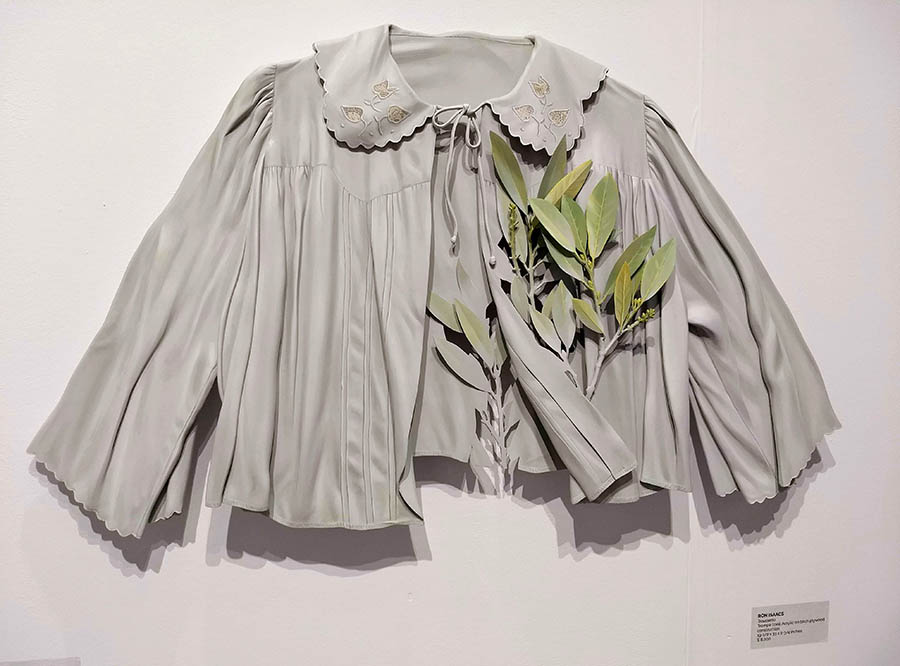
#5 Freeports
Freeports, also known as Free Trade Zones or Free Economic Zones, are specialized facilities that provide secure and tax-advantaged environments for the storage, trade, and exhibition of valuable assets, including art, collectibles, and luxury goods. These areas are typically located within a country’s borders but are considered to be outside its customs territory. Freeports offer various benefits, such as exemption from customs duties, taxes, and stringent regulations that would normally apply to imports and exports. In other words, the simplest way to use freeports is not to pay a sales tax on sold art by storing it in freeports, which speaks volumes of art market tax evasion.
Freeports have gained prominence as a solution for wealthy individuals, collectors, galleries, and art institutions seeking a secure and flexible space to store and manage their valuable artworks. They offer a range of services beyond simple storage, such as conservation, restoration, cataloging, and even private viewing rooms for potential buyers or patrons. These facilities are equipped with state-of-the-art security systems, climate control, and specialized expertise to ensure the preservation of delicate and valuable art pieces. The example of such facility is shown in the Tenet movie.
The primary advantage of using freeports for art storage is the ability to defer tax payments and customs duties until the items are brought back into the domestic market or are sold. This art market tax evasion feature can be particularly beneficial for collectors who acquire artworks from various parts of the world and wish to avoid immediate taxation or customs complications. It also allows for more fluid movement of art across international borders for exhibitions, auctions, and art fairs. Examples are:
- Geneva Freeport (Switzerland): One of the most famous freeports for art storage is the Geneva Freeport. Located in Switzerland, it offers secure and climate-controlled spaces for storing high-value assets, including artworks, fine wines, and precious metals. The Geneva Freeport gained notoriety for its confidentiality and lack of transparency regarding the ownership of stored items, making it a popular choice for individuals and institutions looking to keep their collections discreet.
- Singapore Freeport (Singapore): The Singapore Freeport is strategically positioned in Asia and serves as a hub for art storage and trading in the region. It provides specialized facilities for storing art, precious metals, and other valuable assets. The Singapore Freeport is known for its stringent security measures, advanced technology, and favorable tax policies.
- Luxembourg Freeport (Luxembourg): The Luxembourg Freeport is another significant player in the world of art storage. It offers a range of services beyond storage, including customs clearance, art logistics, and private viewing rooms. The facility’s location within Europe makes it an attractive option for art dealers and collectors seeking a central point for their art transactions. The LUXEMBOURG HIGH SECURITY HUB is a 22,000 m2, 4-story building with beautiful architecture. The facility has 24h-security and offers storage rooms, vaults and safes of custom sizes. https://lux-hsh.com/luxembourg/
In recent years, freeports have faced criticism and increased scrutiny due to concerns about money laundering, tax evasion, and lack of transparency regarding the ownership of stored assets. Some countries have taken steps to address these issues by implementing stricter regulations and transparency measures within their freeport systems.
Sometimes you can see the depiction of freeports in movies. They show such facilities where valuable items, like art can be stored, traded, or showcased. Some movies include:
- “No Time to Die” (2021): In the James Bond film “No Time to Die,” there is a scene set in a fictional Cuban Freeport where a valuable art collection is stored. This location plays a significant role in the plot of the movie.
- “The Thomas Crown Affair” (1999): This remake of the 1968 film features a scene set in a freeport where the wealthy protagonist stores his art collection, including stolen pieces. The freeport becomes a focal point in the investigation of a major art heist.
- “Rush Hour 3” (2007): In this action-comedy film, there is a sequence set in a French customs warehouse that operates as a kind of freeport. The film’s protagonists discover valuable artworks stored there as part of the plot.
- “The Good Liar” (2019): While the film primarily revolves around a con artist and his schemes, there is a scene involving a high-security storage facility in London that serves as a freeport for valuable items.
- “Duplicity” (2009): This movie involves corporate espionage and features a subplot that revolves around a secure storage facility where high-value products are kept. While not a traditional freeport, the concept is similar.
- “Danny Collins” (2015): While not the main focus of the film, there is a scene set in a storage facility where valuable items, including artworks, are stored. This scene contributes to character development and plot progression.
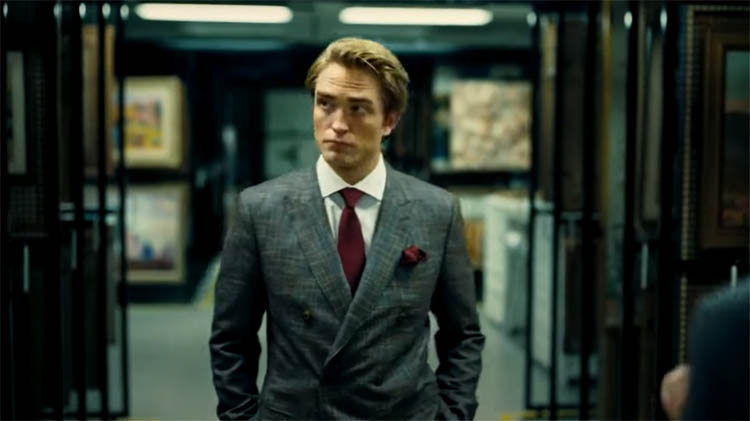
While freeports don’t play a central role in the movies, they serve as intriguing settings for some movie scenes or plot developments. Keep in mind that movies often take creative liberties, so the portrayal of freeports in these films may not fully represent the real-world complexities and operations of such facilities but somehow illustrate the nature of art market tax evasion.
#6 Art market forgery
There are numerous art market forgery schemes. While they’re somewhat different in motivation from all the previous art market collusion schemes listed, they do exist as forged art gets produced and sold to art collectors, art museums and private companies.
Art market forgery means creating or selling artworks that are falsely attributed to a well-known artist or created to imitate a particular artistic style in order to pass them off as genuine.
Misrepresentation of Provenance means providing false or fabricated ownership histories and records of an artwork’s past ownership to inflate its value or authenticity.
#7 Art Philanthropy
What is philanthropy? The original meaning of this word gets corrupted by human nature. Philanthropy raises the person’s profile. It also looks great on paper when the philanthropist is giving money to the foundations. The only problem is that that philanthropist controls the foundation behind the scenes. If it’s an LLC, these companies make and spend money as they want. During the money transfer to the foundation they get a tax break for a charitable contribution. In reality it’s same old tax evasion. If registered as charity, philanthropists donate to both nonprofit and for profit companies with direct interest in those companies that make them money. It’s a business, not philanthropy.
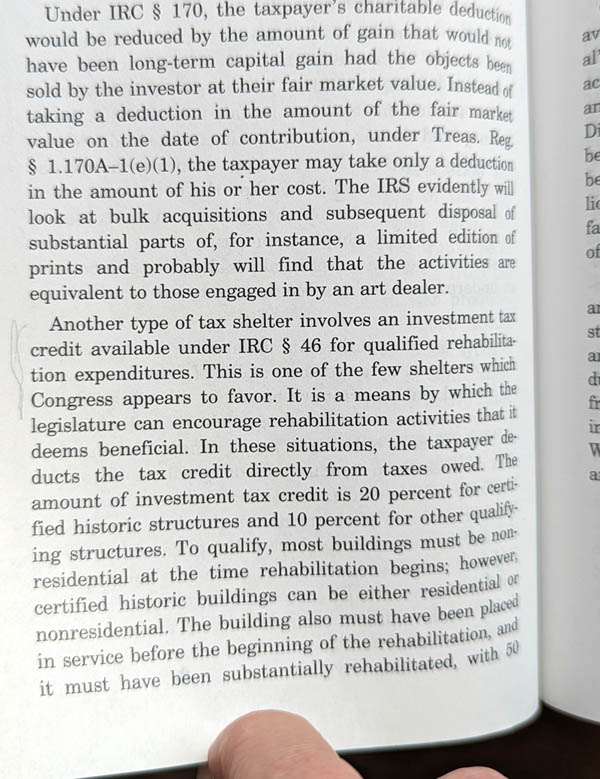
#8 Price gauging at art auction houses
Price gouging at art auction houses refers to the practice of artificially inflating the prices of artworks beyond their fair market value through various means, ultimately leading to higher auction results. This can occur due to a combination of factors, including manipulation, collusion, hype generation, and unethical practices by auction houses, bidders, or intermediaries involved in the art market. While not all art auction houses engage in price gouging, instances of such behavior can undermine the transparency and integrity of the art market.

Methods of Price Gouging:
- Shill Bidding: Auction houses might use “shills,” which are individuals posing as legitimate bidders, to drive up the bidding and create an illusion of high demand. Shill bidders artificially increase the price of an artwork, encouraging genuine bidders to offer higher bids.
- Pre-Arranged Sales: Some artworks might be sold privately before an auction but are then presented as fresh-to-market items. This tactic can create the perception of high demand and value, leading to increased bidding during the auction.
- Chandelier Bidding: Auctioneers might falsely claim to have received bids from the audience, inflating the price of an artwork even if no actual bids were placed. This technique encourages real bidders to compete at higher price points.
- Limited Information: Auction houses might withhold relevant information about the artwork’s condition, provenance, or authenticity, leading to higher prices based on incomplete or misleading information.
- Hype Generation and Marketing: Auction houses often use elaborate marketing campaigns, glossy catalog descriptions, and celebrity endorsements to generate hype around certain artworks or artists. This can create an atmosphere of excitement and exclusivity, driving up demand and subsequently inflating prices.
Price gouging can have many negative consequences for the art market that include loss of trust of collectors and investors, loss of value of art, and damaged reputation of houses, dealers, etc.
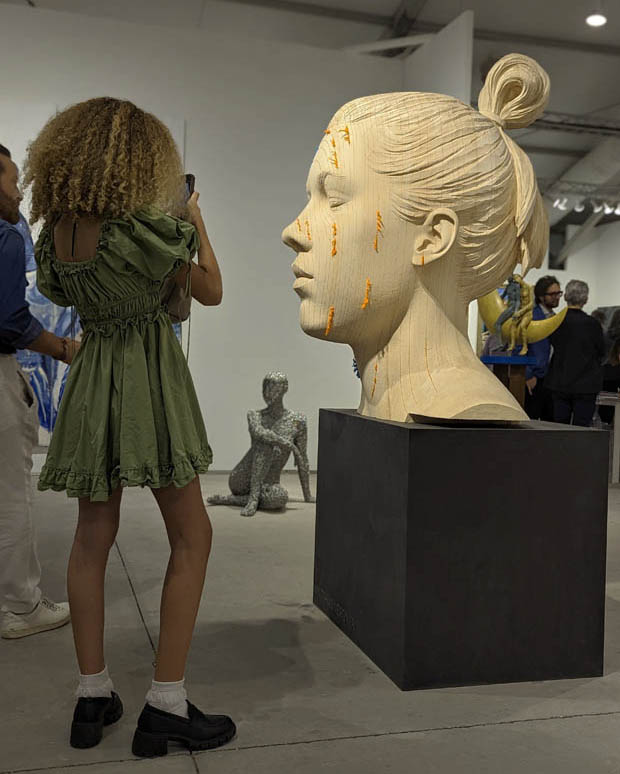
Other art market scams:
In addition to price gauging, you must be aware of Online Auction Scams. These scams involve posting fake listings on online auction platforms, often using stolen images, to deceive potential buyers into making payments for nonexistent artworks. There are also scams involving undisclosed restoration or damage. The scammers conceal the fact that an artwork has undergone restoration or repair, or downplaying the extent of damage, in order to sell it at a higher price. Some art market participants also give false appraisals. By providing inaccurate or inflated appraisals of an artwork’s value to deceive buyers or lenders for financial gain. Finally, some can forge the Certificates of Authenticity by creating counterfeit certificates of authenticity or manipulating genuine certificates to falsely authenticate an artwork. Obviously, it leads to financial losses and legal battles by the art collectors.
In conclusion
You can call me cynical or too ironic describing the art world. After all it’s a web of connected art dealers, auctioneers, appraisers, art critics, influencers and gallerists – all participating in the art market collusion. My point is that art has nothing to do with art. All of these art market money laundering schemes are real and some thrive because of legit tax code in the US. Art as an investment is for people to do just that. To put money to work. Yes, they all say that they love and enjoy looking at art. Perhaps. And so many really talented artists live and work on the sidelines of these marketing machines and have no way of receiving a” stamp of approval” to either confirm or raise the value of their art.
Until the day we have a new voting system in place where people vote after seeing new shows or recent acquisitions at the art museums, nothing would change. We will continue to be mesmerized by exuberant pricing and ugly “art” hung in institutions telling us what’s great and what’s not. They will make you believe something that’s not true. You will continue being confused about what you’re seeing, saying to yourself that you don’t understand art.
The sad part is that the average Joe and Jane pay their taxes to support the government spending while wealthy people who can really contribute to the well-being of our society avoid doing just that.
If you’re an artist and want to take part in this marketing machine, now you know what to do. You can try getting into the shows at the art museums in New York or connect to a powerful player in the artworld who would promote your art.
As a side note, you can read about various cases and corruption schemes in this book. It’s a great read to understand other art-related issues as well. Art Law in a Nutshell, 6th Edition https://amzn.to/3Ds3SmJ Art Law in a Nutshell presents an overview of the legal issues concerning art. It covers the definition of art, and the theft and movement of art in wartime and peacetime. It examines the business of art for artists, dealers, museums, and collectors, including art as an investment, auctions, authentication, insurance, tax issues for artists and collectors, working artist issues, and aid to the arts. It also explains the intellectual property issues of copyright, trademark, moral rights and economic rights, right of publicity, and First Amendment freedom of expression rights. The latest introduction was written by a Ninth Circuit Court of Appeals judge who actually wrote at least one of the opinions discussed in the book.
SHOP visionary art for sale now!
